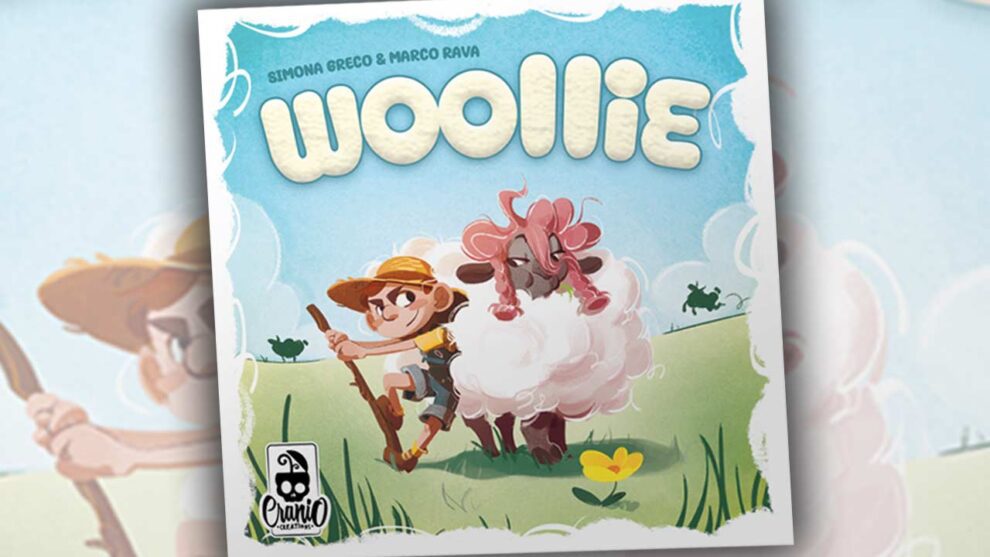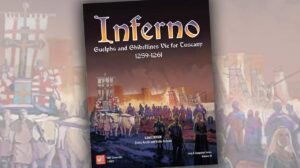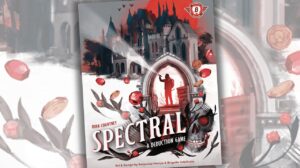Disclosure: Meeple Mountain received a free copy of this product in exchange for an honest, unbiased review. This review is not intended to be an endorsement.
From around the age of 10 to 12, I collected games by the company now known as ThinkFun. At the time, they were still operating as Binary Arts, which sounds more like a software development firm than the publisher of Rush Hour. I spent untold hours with their products, happy as could be to sit and work out the solutions to all those spatial puzzles. My mother certainly thought I had too many of them, and would have preferred I not collect them, but she owes Binary Arts/ThinkFun for days’ worth of quiet. Most of my collection moved on decades ago, though I still have their 15 Puzzle sitting in my desk drawer.
I carry with me to this day a fondness for those sorts of puzzles. If you put me near one, I will start working on it. That’s how I ended up with a copy of Woollie. I was supposed to be paying attention to a meeting with publisher Cranio Creations, but there was Woollie, sat there in front of me. I saw the cards and the tetrominoes and felt compelled.

The Puzzle
There are 40 cards in Woollie, each with a different puzzle on it. Though they vary in size from 3×3 to 5×5, the goal remains consistent: figure out which of the 11 double-sided tiles are placed on the grid to create the pattern of sheep and flowers that you see on the card.
The orientation of the sheep is key. Early puzzles give you the locations of some—but not necessarily all—flowers, which helps speed up the process. When I was first trying Woollie out, I didn’t realize that the cards don’t show all the flowers, and for some time I was stymied by the very first puzzle. It wasn’t until I opened my review copy and read the rules that I understood why the first puzzle in a product that says 7+ on the side was so difficult. It is, in fact, impossible as I was trying to complete it.
The board and pieces are magnetic, which improves Woollie’s prospects as a travel toy. The tetrominoes are punched out of magnetic sprues, and there was a shocking amount of waste. I threw away a whole lot of magnet when I opened this. I would tell you I threw away significantly more than was kept. There has to be a better way to do that.
The first few puzzles went by pleasantly enough, but I quickly grew bored. The later, more difficult puzzles were slogs, utterly without the joy of play and discovery. I, a person inclined to both puzzles and bouts of hyper-fixation, couldn’t be bothered. That was strange. The good news is, I know why.
The Solution
About a third of the way through the deck of puzzles, when I started to itch, I asked myself what ThinkFun would have done differently. The product itself would almost certainly be more involved, with 3D pieces, but that’s not a knock against Woollie, and I wasn’t focused on production. How would the puzzle be presented to the customer?
The part where Woollie repeatedly lost me was in the early stages of each puzzle. Once you hit the medium difficulty, 4×4 puzzles, every session starts with the most tedious process imaginable. To have any chance of figuring out the puzzle without spending ages on it, you have to go through, piece by piece, and check to see whether either side of that piece could possibly fit on the board.
“Is there anywhere this arrangement of sheep and empty spaces could fit? No. Okay. How about this side? Yes? Okay, put it in the This Side Only section. This piece could potentially go either side up? Alright, put it with the others. This one can’t fit at all? Great. Back in the box.”
Puzzle after puzzle, you have to do this. It drains your will to live. It wasn’t just me. I put Woollie in front of a friend who works as an architect—no slouch when it comes to spatial thinking—and she walked away from one of the 5x5s after ten or fifteen fruitless minutes. If ThinkFun had published Woollie, I am willing to bet that there would be one small, but significant, difference. Each card would tell you how many of each tetromino shape is used in the solution. With that change, the user is spared a process that doesn’t involve any creativity, and can skip straight to play. That’s what Woollie is missing. By the time you get to the play portion, you’re exhausted.
Woollie has in its favor a compact box and those magnets, which make it ideal for those on the go. The market is jam-packed with travel-friendly puzzles, though, and it’s impossible to recommend this one in the face of ThinkFun’s robust selection, or SmartGames’ recent output. Woollie buries the joy under too much housekeeping. They’re good sheep, but they could use a little sheering.











This is not the sort of solo experience I seek out, so I was unlikely to stumble on to this. That said, thanks for saving me the remote possibility of wasting my money on this. 🙂
A great review: informative and quite honest. Thank you so much!